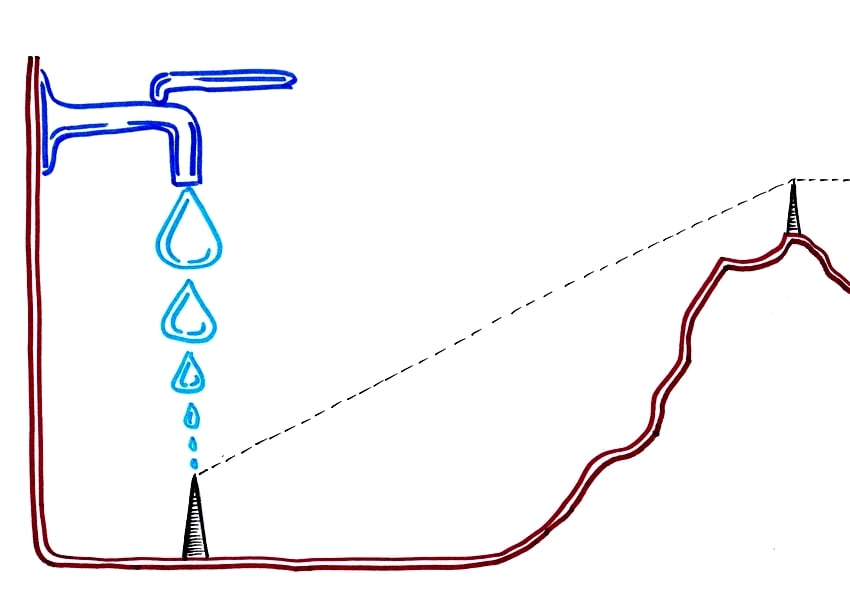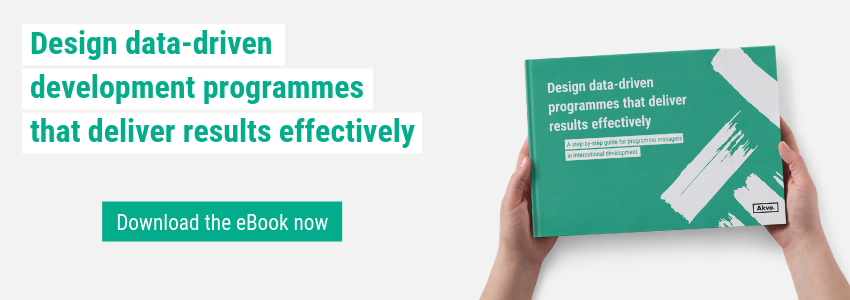Setting the scene
End-user is a synonym of customer or client; a user of a product or service. Take water for example. Imagine water stops flowing from the tap in your shower. Your immediate response will be to call the water company. They are, after all, responsible for this service, and you pay for it. The outcome of this phone call, email or whatsapp message should be clear; it must be fixed as soon as possible.
Now imagine you walked for 25 minutes with two yellow jerrycans to fetch water for the day. You arrive at the community waterpump. There was water yesterday, but today you find out it does not provide water any more. Whether the well has dried out or the pump is broken, is not clear. You have no choice but to carry the two yellow jerrycans to the handpump in the next village, another 35 minutes away. You have no information as to when this situation will be solved.
Breakdown of water facilities and ineffective repair processes is a serious situation worldwide. This blog is about the question: who do you call?
End-user feedback in Uganda, Mali and Ghana
Recently, Akvo worked with several partners to map about 2,500 water sources in two districts in West Uganda and train communities to report break-downs of facilities via SMS as part of an end-user feedback pilot project. The messages were sent to mechanics and government officials; around 500 messages were received in the first two months. However, two large hurdles showed up; lack of funds to pay for the repairs and limitations of the use of SMS. Hardly any repairs were done which resulted in loss of trust in the mechanism. The pilot has ended and we have learned a number of lessons, which we feel obliged to take forward.
For UNICEF in Mali, Akvo performed an SMS feasibility study regarding incident reporting on water facilities. We quickly found out the study was about the process of end-user feedback rather than SMS as a means to communicate. A number of key questions were raised: who are the users exactly? How do they know of the tool and why would they trust and use it? Who is responsible for taking action when a breakdown happens and can and will they take action? And also: why SMS? Two key points emerge; design with the users and understand the context. These are the first two principles of the ten Principles for Digital Development.
When choosing the means to achieve sustainable results, a money-wise approach is essential. In the SMARTerWASH project in Ghana, we collaborate with, amongst others, a private partner who is iteratively developing a business model around repairs of water facilities. It is interesting that they put the user’s needs first and link this to mobile money opportunities. The technical implementation is also interesting; they use a combination of voice calls via a call centre (to understand what the exact problem is), USSD* (to order from a spare parts catalog), and SMS (to notify the user of a spare part dispatch).
These three cases highlight that, in the case of end-user feedback to support rural water availability, it’s not about technology but about the process, roles and responsibilities of the parties involved.

Above: “When water stops flowing from the tap, who do you call. And what happens next?” By Marten Schoonman
‘ICTs help citizens voice concerns over water – or do they?’
This is the title of an excellent article by Katharina Welle, Jennifer Williams and Joseph Pearce in January’s IDS Bulletin. They analysed eight cases of ‘end-user feedback’. The abstract reads: “The findings demonstrate that models where a service provider is committed to responsiveness and designs an in-house fault-reporting and maintenance system show greater responsiveness and accountability to users than crowdsourcing models where users are encouraged to report faults.” Factors relating to end-users which hamper successful implementation include; lack of trust, fear, apathy, delay (SMS being a non-instantaneous communication method) and cost.
It’s worth noting that SMS is not the only tool available. According to the article, “On the ground, ICTs are increasingly explored as an avenue for citizens to receive information about services and to report service delivery failures, using technologies including community radio, short message services (SMS), mobile-based calls, mobile phone applications, websites and interactive mapping.”
When focussing on rural water access, only one analysed approach had full scores for reporting using ICT means, report processing and service improvements: “The Smart Handpump initiative involves a mobile phone chip built into the handpump handle that sends regular reports about the level of pumping activity to a local maintenance provider. As soon as the data show an unexpected downtime, the maintenance provider can follow up with the responsible water user committee.” And “This model relies on a high-level, demonstrated commitment to responsiveness from the service provider to its clients via better reporting and maintenance services.”
The way forward
Let’s learn from the lessons provided and focus on the key points; who are the parties involved, what are their roles and responsibilities and are they successful at delivering them? Once we have mapped those we have clarity on where the gaps or bottlenecks are. It is likely that they predominantly will be in the social and institutional aspects of the process.
*USSD = Unstructured Supplementary Service Data, typically the system used to charge and check your pre-paid mobile phone credit.



